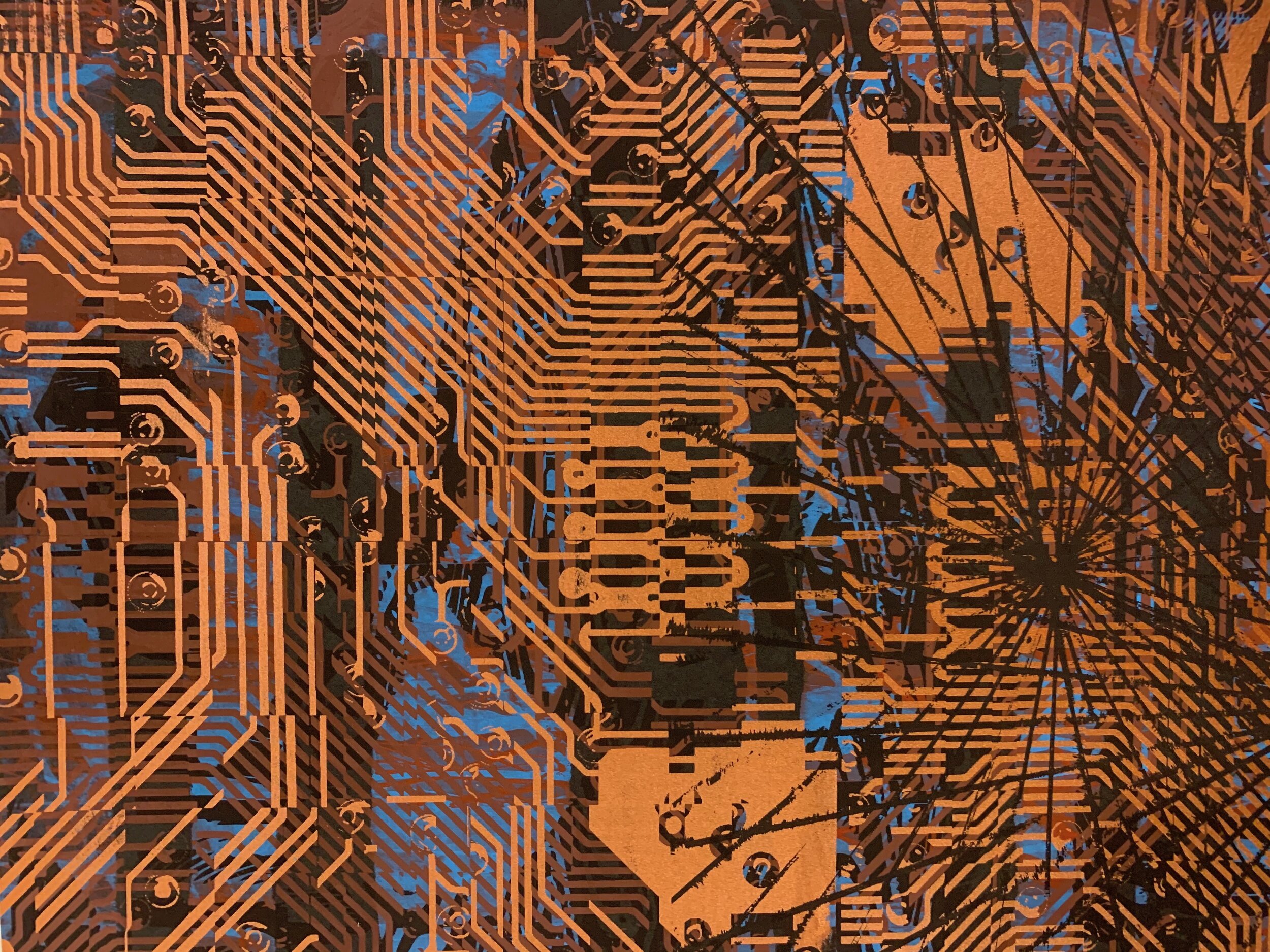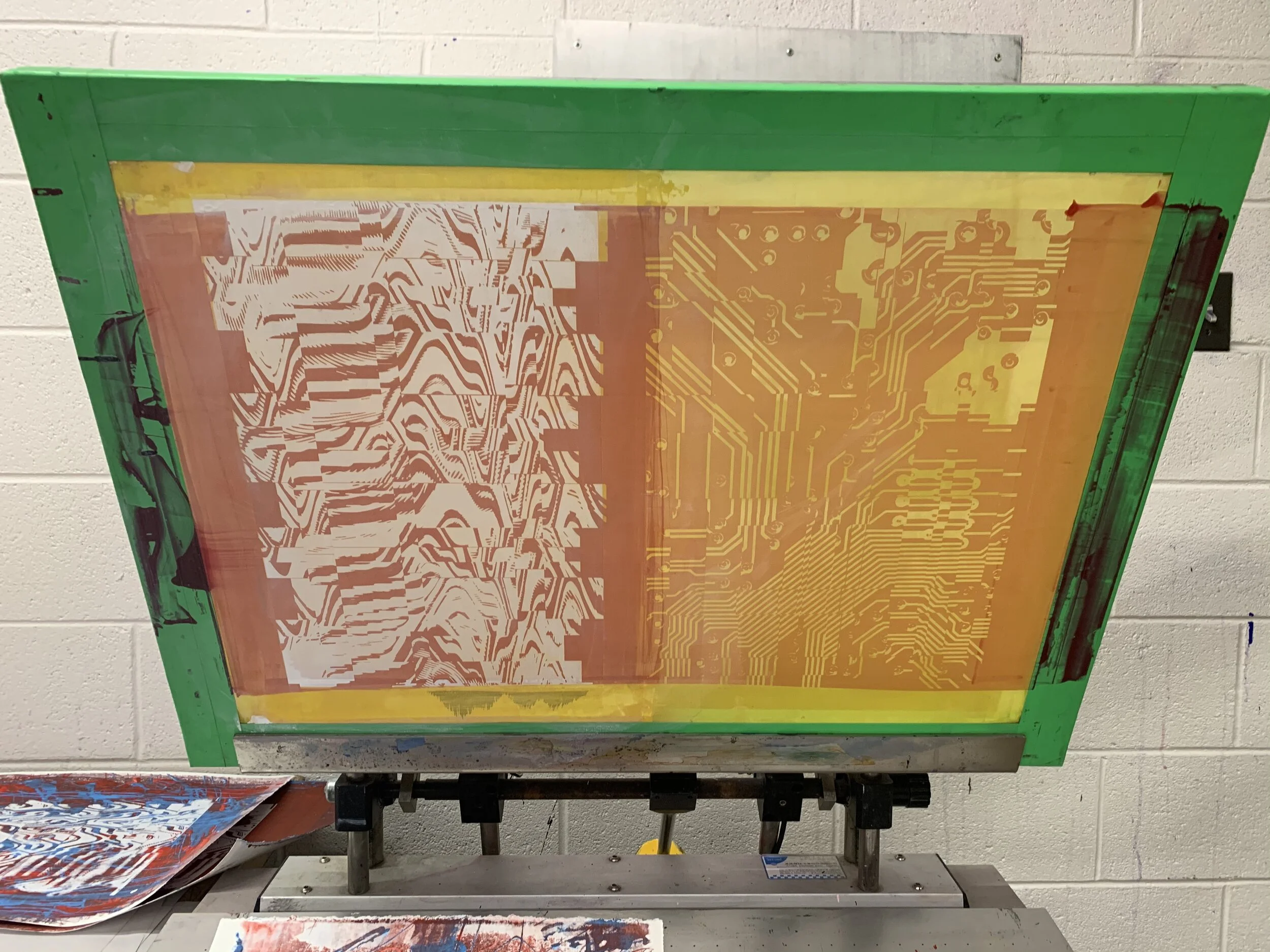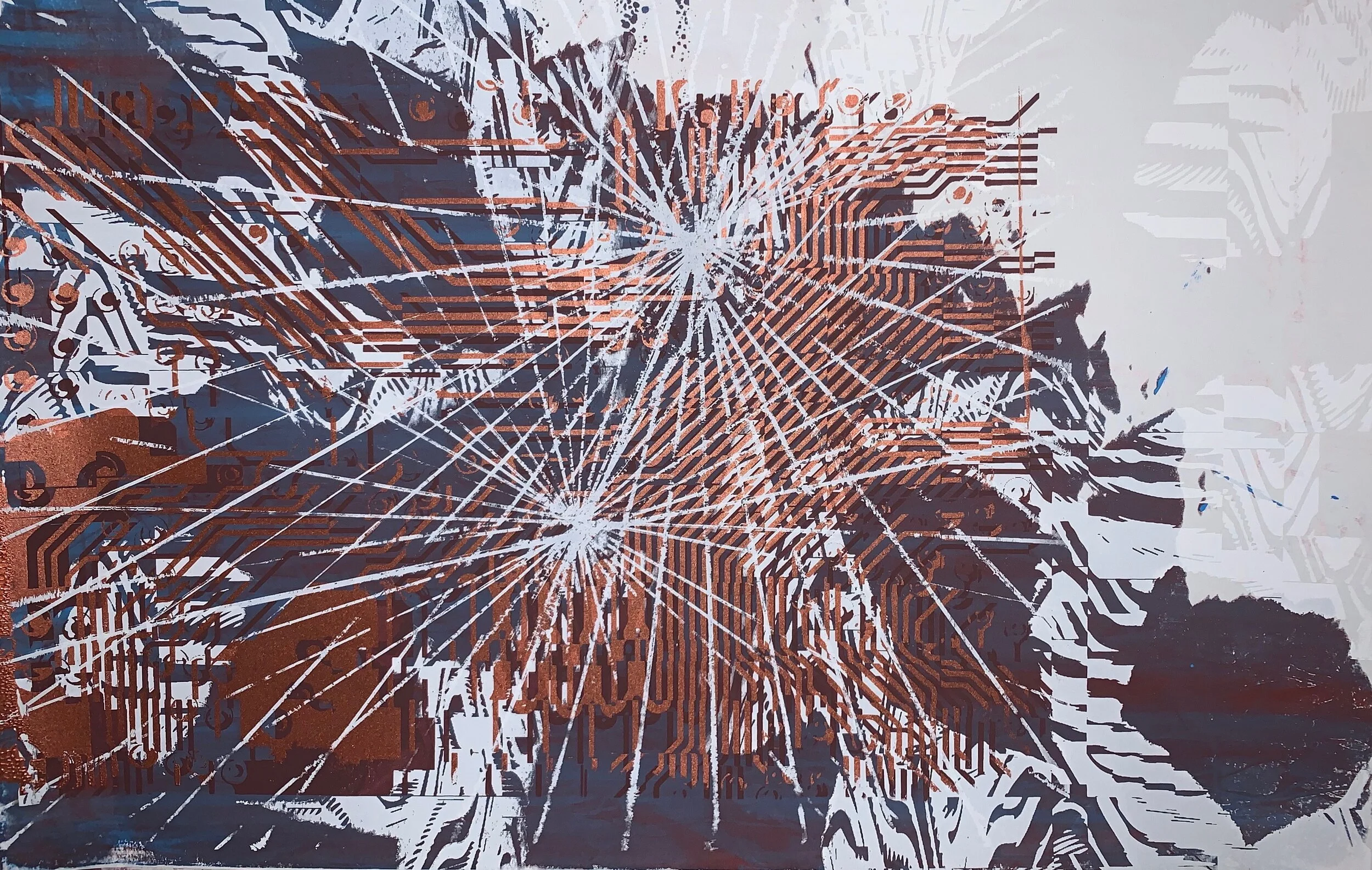
A Glitch in the System
Utilizing a screenprinted pattern as the base for a product line of technology accessories.
About the Pattern
These prints are based on the topic: technology in art. Having studied art for the last four years and graphic design for the past two, I have come to realize how significat of an impact technology has had on the creation of my work, as well as the work of the people around me. I wanted my prints to draw reference to art that technology helps create as well as the building blocks of the technology itself. I created my layers both digitally and manually to represent how the creation of art using technology is a two-way process. While the technology helps to complete the actions, the user is ultimately the brain behind the design.
The Process of Making the Prints
Layer 1
For the first layer, I used bright red and fluorescent blue to create a 3D effect, specifically, anaglyph 3D. Anaglyph 3D is “the stereoscopic 3D effect achieved by means of encoding each eye’s image using filters of different (usually chromatically opposite) colors, typically red and cyan.” In an attempt to create this effect, I splattered ink directly onto the screen (layering red on top of blue), and then flushed the screen using transparency base. The transparency base helped to “lock in” the ink, translating the splattered/glitchy design onto the paper.
Layer 2
The second layer references one of the downfalls of technology: system error and breakdown, causing the computer screen to malfunction and glitch.
Layers 3 & 4
The third and fourth layers reference circuit boards. With these layers, I wanted the emphasis to be on the building blocks of technology. The circuit board acts as the brain of the computer and was meant to reference my brain as an artist: with all my thoughts and ideas flowing through those lines.
Layer 5
The fifth layer references laser art, a practice becoming more and more prevalent in the art and entertainment world today. After researching some of the most popular laser shows in the world, I found that the lasers created straight-line patterns in many overlapping directions. Specifically, I watched a video titled “Assemblance by Umbrellium – Powered by Pangolin and KVANT” that illustrated the process of how the Pangolin team designed this installation in London. From the video, I saw the unique patterns these lasers created as well as the interactive quality they possess.
P R O D U C T M O C K - U P S




Programs Used: Photoshop





